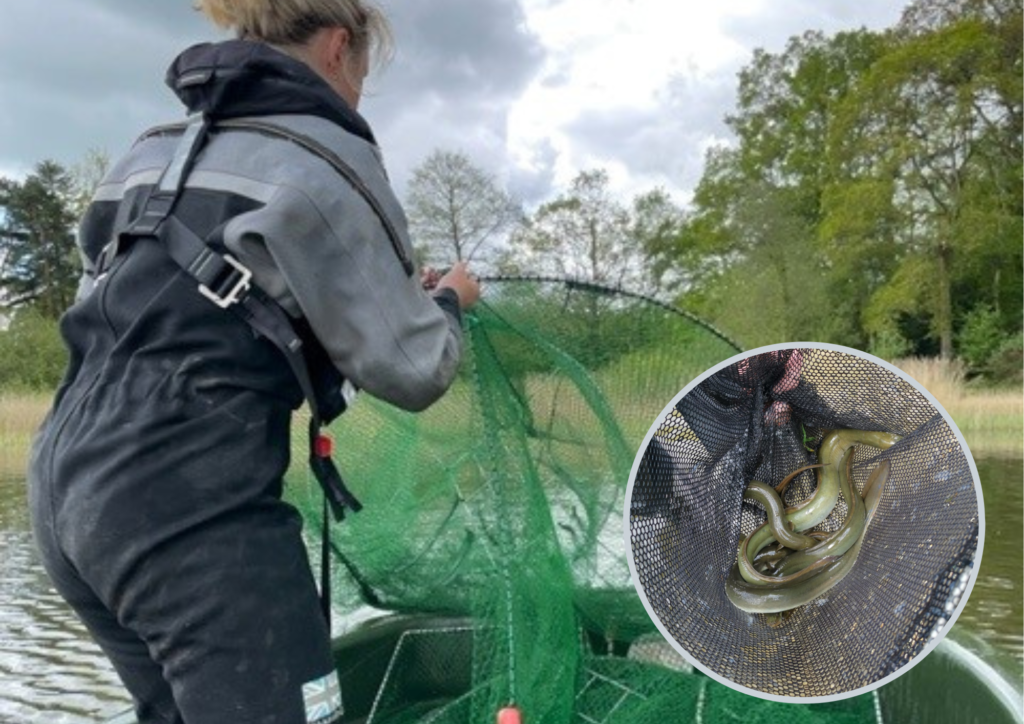Endangered eels are getting a helping hand from Somerset Council’s countryside team at Chard Reservoir Local Nature Reserve (LNR).
The team is working with the Environment Agency (EA) to help increase nationally declining numbers of European Eels (Anguilla Anguilla).
European eels are critically endangered – declining by 65% in the UK and 95% worldwide since 1980 – due to overfishing, disease, and the blocking of waterways with dams and weirs, preventing them from completing their migration and breeding cycle.
Chard Reservoir LNR, which is managed by the Council, has a long history of eel habitation and an EA survey has confirmed its waters are a viable habitat to support and expand their numbers and distribution, as well as be a place to study and increase understanding of the eel migration.
In May this year an extra 8,000 glass eels were released into the reservoir – these will develop into juvenile eels known as elvers and once mature will begin their journey to the Caribbean to spawn.
To aid this, the Council’s team will install eel passes on spillways of the dam to support their movement to and from the River Isle and onwards to the River Parrett, out to the Bristol Channel, and the epic 3000 mile journey to the Sargasso Sea.
Rachael Whaites, Countryside Manager at Somerset Council, said: “We’re delighted that Chard Reservoir is being used to help boost eel numbers. A greener, more sustainable Somerset is one of Somerset Council’s top priorities and encouraging a rich biodiversity is part of that”.
Geoff Way, spokesperson for the Environment Agency said “Chard Reservoir sits at the head of the River Isle and offers excellent habitat for young eels to grow and develop into mature adults. This was confirmed following a 24hr netting survey recently performed by our officers, where a sample of the resident eel population was measured and recorded, showing good numbers present.
“With both new and improved eel passage projects planned for the River Isle and other tributaries of the River Parrett, it is hoped eel populations at Chard Reservoir will further improve in years to come. We will continue to work with our partners, including Somerset Council, to implement measures that benefit the European eel”.
Every autumn Britain’s eels undertake a truly mammoth journey, travelling more than 3,000 miles from the freshwater wetlands of the UK across the Atlantic Ocean, and onwards to the Sargasso Sea in the Caribbean.
Somerset Council is committed to tackling climate change and is working towards a carbon-neutral Somerset by 2030. Find out what you can do to help protect Somerset against the effects of climate change visit Climate and Ecological Emergency (somerset.gov.uk)
- Eels start their lives as eggs, 3000 miles away in the Sargasso Sea in the Caribbean.
- Their eggs hatch into larvae, which drift along on the Atlantic Ocean currents for about 300 days toward British shores.
- Once the larvae reach the coast of Britain, they transform into glass eels – so-called because they are transparent. They head up into our estuaries to begin their inland journey in search of fresh water.
- When they find freshwater, the glass eels change into miniature versions of adult eels and at this stage are called elvers.
- Elvers can take up to 20 years to become mature adult eels. Once they have matured, they begin the long migration back to the Sargasso Sea to breed and start the lifecycle again.

